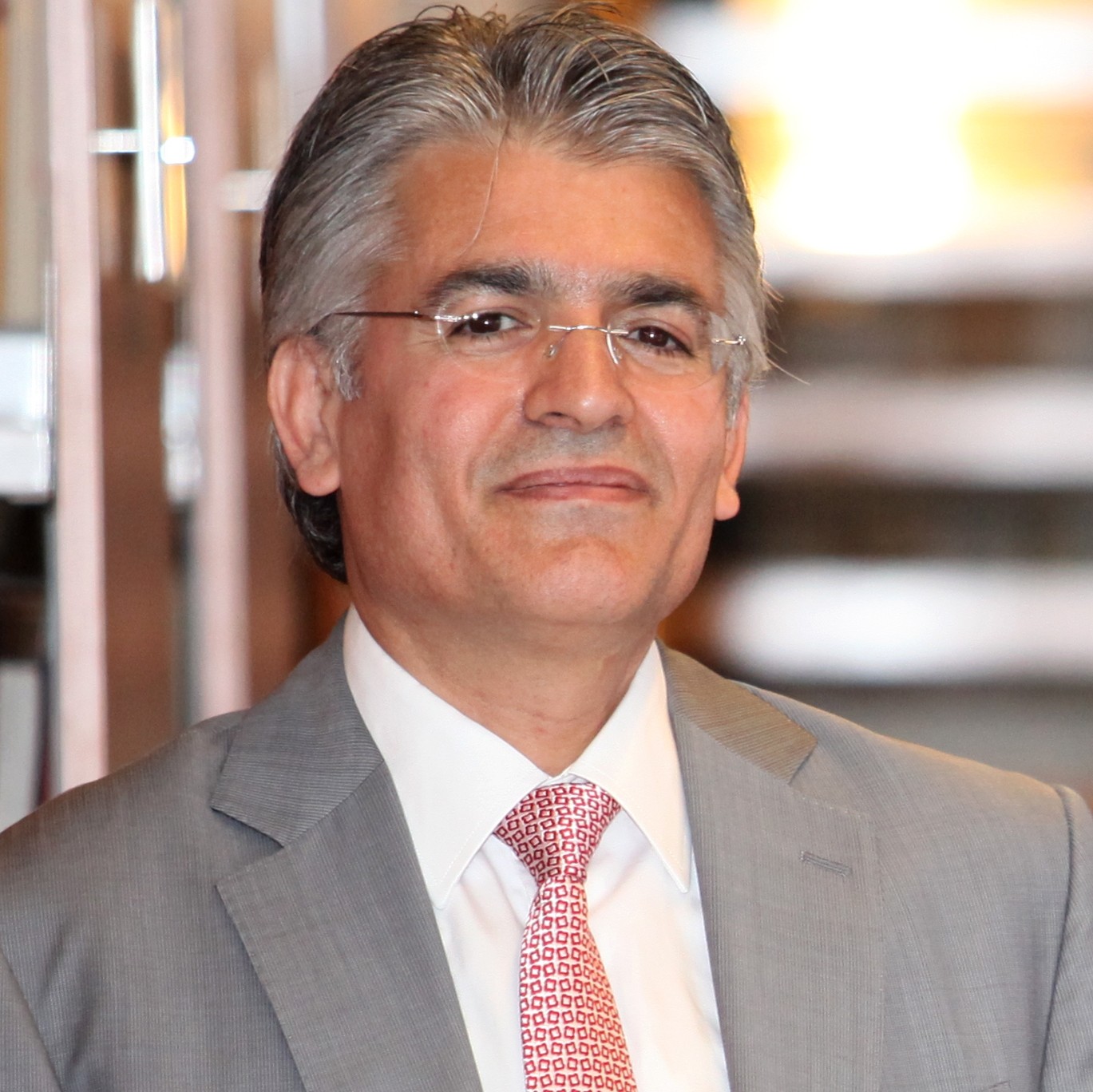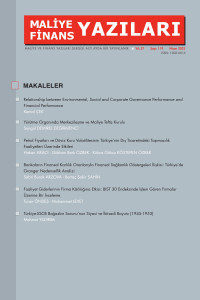Articles
Issue Editorial Board

Dr. Eken was born to Mahmut and Latife Eken in Silopi, located in the Southeast of Turkey, in 1965. He received his BA in economics from Anadolu University, M.Phil. in finance from the University of Exeter in 1992 and his Ph.D. in banking from Marmara University in 1999. Having started his career as a banker, Dr. Eken worked for several banks in Turkey during the period 1992-2003. Before joining academia and terminating his professional banking career he also served as the board member of several banks in Turkey and Romania. He is the author and co-author of several finance and banking related academic books and articles written in Turkish and English and he is also the author of two novels and a story book. Specialized in the area of asset/liability management in commercial banks, he teaches portfolio theory, bank management and other banking and finance related courses. Holding various positions at different universities and teaching in the field of financial economics Dr. Eken got retired in September 2020. Professor Eken was elected as the chairman of Türkiye Ekonomik ve Mali Araştırmalar Vakfı in June 2019.

Prof. Dr. Zeynep Dina Çakmur Yıldırtan is an academic at Marmara University and holds a Ph.D. in Banking and Insurance. She specializes in financial econometrics, capital markets, and financial crises. She is highly proficient in English and has published numerous academic articles, books, and conference papers.
As of 2024, she is on a sabbatical research leave at Kingston University Business School (UK). Previously, she has held representative roles at international institutions such as the University of Málaga and the University of Maryland's Robert H. Smith School of Business. Her academic consultancy includes TÜBİTAK and various financial research projects. She also serves as an editor for academic journals.
Her teaching expertise covers econometrics, financial management, research methods, and insurance principles. She has participated in numerous international conferences and served as a referee for scientific journals.

He began his professional career in 1992 as a specialist at the Banking School of T.C. Ziraat Bank. He worked as a specialist and manager in the bank's specialized agricultural loans and capital markets departments. He also served as deputy branch manager and branch manager in the securities branch and other branches.
In 2015, he joined the Department of Banking and Finance at Kırklareli University as an assistant professor. He earned the title of associate professor in 2017 and became a full professor in 2023 in the field of finance. His academic studies focus on banking and finance, and he has numerous publications in national and international peer-reviewed journals and books.

Dr. Hüseyin Selimler holds a Ph.D. in Banking (Marmara University, 2006) and a Master’s in
Public Finance (Istanbul University, 1996). With 25+ years in banking, he served in leadership
roles at Ziraat Bank, including Inspector, Chief Inspector, and Branch Manager. An award-
winning scholar (3rd place in Türkiye’s 1997 Banking Competition), he transitioned to
academia in 2016 as a Finance Professor and Vice Dean at Istanbul Aydın University. Promoted
to Associate Professor in 2017 and Full Professor in 2022, he has published extensively on
banking reforms, asset management, and financial regulation.
Aim & Scope
- The aim of the journal is to publish articles that have a specific contribution to the literature on public and corporate finance and have original research characteristics. The Journal of Finance Letters also aims to include studies that include solutions to the problems that arise in practice.
- The aim of the journal is to publish articles that have a specific contribution to the literature on public and corporate finance and have original research characteristics. The Journal of Finance Letters also aims to include studies that include solutions to the problems that arise in practice.
Author Guidelines
- ·Manuscripts should be written in Microsoft Office Word program, in A4 page layout, using Times New Roman font and 11 points.
- 2.5 cm margins should be left on the edges (bottom, top, right and left).
- Manuscripts should be written with one line spacing, paragraphs should be justified on both sides, no indentation should be left at the beginning of the paragraph, one line space should be left between paragraphs.
- Manuscripts to be sent should not exceed 20 pages, including text, tables, figures, references and appendices.
- Since the blind refereeing system is implemented through DergiPark, the article and the cover must be sent as two separate files.
- The cover page should include the name of the article, the names and surnames of all authors, their titles, their institutions, e-mail addresses, orcid numbers, if there is more than one author, the corresponding author, telephone number, the persons/institutions to be thanked, if any, and other explanations and notes.
- Information about the authors should not be included in the article.
- The following points should be taken into consideration while writing and editing a scientific article.
Title
- It should be written briefly, starting from the top-left edge of the page, giving information about the subject of the article, with a margin of 6 cm. The title should be prepared in both Turkish and English
Abstract
- After the Turkish title, the Turkish abstract is written. The abstract should briefly explain the purpose of the study, the methods applied, the findings, and the result. The Turkish abstract should not exceed 100 words.
- The abstract should be written in 10 pt and italic.
Keywords
- At the end of the abstract in Turkish, a maximum of four keywords that best describe the content of the article should be given.
Jel Classification - Appropriate Jel classification numbers should be given for the study.
English Title
- After the Turkish text, three lines of space should be left and the English title should be written.
Abstract - The Turkish abstract must be written in English as well. The English abstract should not exceed 100 words.
- The abstract should be written in 10 font size and italic.
Keywords
- Key words should be written in English.
Jel Classification
- Appropriate Jel classification numbers should be given for the study.
Introduction and Conclusion
- Introduction should start from the beginning of the second page and it should be written as "1.Introduction".
- The importance and purpose of the study should be stated.
- The "Conclusion" part of the study should also be numbered.
Headings and Subheadings
- The first letters of all titles should be written in uppercase, other letters in lowercase
- Main headings should start from“1. Introduction" and according to the levels of sub-titles they should be numbered as 2.1.
- All headings should be written in bold.
- One line space should be left before and after all headings
Figures and Tables
- All figures and tables to be used in the text should be placed in the relevant place in the text and numbered respectively. Table names should be at the top, and figure names should be at the bottom. The source from which non-original tables and figures were taken should be indicated.
Equations
- Equations should be given sequence numbers
References
- Citing and citing references in articles should be done according to the publication guidelines of the APA (The American Psychological Association).
- Benefited works should be stated in the "References" section without giving a title number.
- All the works used should be mentioned in the bibliography. The bibliography should cover all the sources cited in the article, and the works not cited in the article should not be included in the bibliography.
Appendices
- If appendices are attached to the work, they should be numbered and placed after the bibliography.
Citations
- References should be made in the text, not in footnotes.
- If the sentence is formed without the information about the title of the work in the sentence, it can be shown as (Sharpe, 2005) at the end of the sentence. If the number of authors is two it should be shown as (Altınok and Eken, 2005).
- If the number of pages are desired to be specified, they can be added after the year by separating them with commas. Sample; see Ansari (2007, p. 126.)
- When more than one work is cited in the same sentence, the works in the common parenthesis should be separated with semicolons. Example: (Sharpe, 2005; Koy, 2017)
- If the title of the work is the element of the sentence, the surname of the author and the year of publication are written in parentheses: Example: According to Sharpe (2005) ….
- In case of more than one author: According to Eken, Selimler and Koy (2005)
- In case of more than two authors, all authors should be written as Eken et al. (2005) in the first use and in subsequent uses.
- If the cited author has works published in the same year, the letters a, b, c are used to separate these works. Example: İlseven (2005a) or İlseven (2005b)
- All abbreviations should be written in their unabridged form in parentheses at first use.
- Abbreviations can be used when referring to studies related to institutions. In some cases, the short name of the work should be used as descriptive information. Example (CMB Communiqué No. xxx 2004)
- Laws, Communiqués, Regulations, etc. In case of reference, the law number and/or number and the article number should be clearly written. Example (3167 p. Check Law. a. 16)
Bibliography Examples
- Book:
- Krolzig, H.-M. (2013). Markov-Switching Vector Autoregressions: Modeling, Statistical Inference, and Application to Business Cycle Analysis. Berlin: Springer Science & Business Media.
- Bildirici, M. E., Alp, E. A., Ersin, O. Ö., & Bozoklu, Ü. (2010). Nonlinear Time Series Methods Used in Economics. Istanbul: Turkmen Bookstore.
- Chapter Within a Book:
- Paradi, J. C., Yang, Z., & Zhu, H. (2011). Assessing Bank and Bank Branch Performance. In W. W. Cooper, L. M. Seiford, & J. Zhu (Eds.), Handbook on Data Envelopment Analysis (pp. 315-361). Boston, MA: Springer US.
- Article:
- Avkiran, N. K. (2011). Association of DEA Super-Efficiency Estimates with Financial Ratios: Investigating the Case For Chinese Banks. Omega, 39(3), 323-334. doi:10.1016/j.omega.2010.08.001
Ethical Principles and Publication Policy
- The journal is the scientific professional publication of the Turkish Economic and Financial Research Foundation (TEMAR). Journal of Finance Letters is the continuation of the Journal of Finance Articles, the first issue of which was published in June 1986.
- Journal of Finance Letters is a blind peer-reviewed journal publishing articles in economics, finance and banking.
- The main publication policy of the Journal of Finance Letters is to publish articles, writings, and translations that have a specific contribution to the related literature, are original researches, and offer solutions to the problems that arise in practice.
- Journal of Finance Letters is published semi-annually in April and October.
- Manuscripts sent to be published in the journal are examined by two blind referees who are listed in the academic referee board. When the referees request a correction from the manuscript writers, the manuscripts are not accepted for publication without the corrections requested by the referees
- For those that have been decided to be published, the authors are informed with a letter of acceptance. Manuscripts that are not accepted for publication are reported to the author(s), but are not returned.
- It is essential that the articles to be published in the journal have not been published in another journal as full text.
- Before the manuscripts are published, the printing proof is sent to the authors. The responsibility of the errors seen in the article that is published in the journal belongs to the author(s). No attachments can be made by the authors to the articles that are decided to be published.
- The principles of Turkish Language Association Spelling should be observed in the articles sent to the journal.
- Publication language is Turkish and English.
- A donation of 400 TL should be made to the Turkish Economic and Financial Research (TEMAR) Foundation in order to start the refereeing process of the articles sent to our journal.
Account Name: TEMAR Turkish Economic and Financial Research Foundation, Vakıfbank Cağaloğlu Branch, IBAN: TR 0600 0150 0158 0072 6781 2813 - For studies that require ethics committee permission in the research area, information about permission should be included in the article.
For details on ethics committee approval, see: https://dergipark.org.tr/tr/pub/mfy/page/10123
Price Policy
A donation of 400 TL should be made to the Turkish Economic and Financial Research (TEMAR) Foundation in order to start the refereeing process of the articles sent to our journal.
Account Name:
TEMAR Turkish Economic and Financial Research Foundation
Vakıfbank Cağaloğlu Branch
IBAN: TR 0600 0150 0158 0072 6781 2813
The scope of the Journal of Finance Letters consists of studies in the fields of economics, public finance, finance, and banking.






